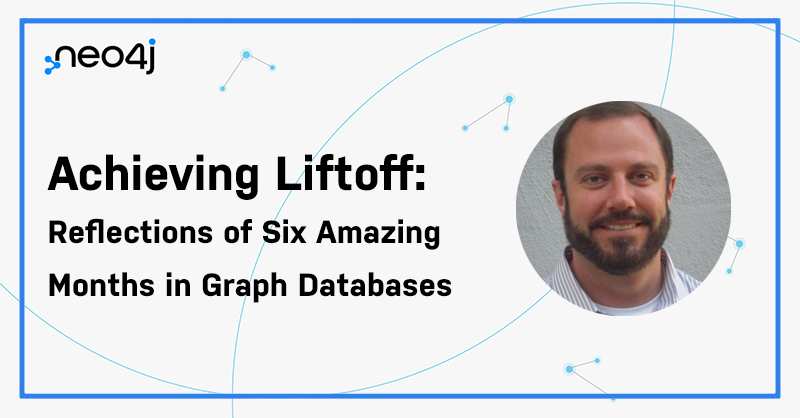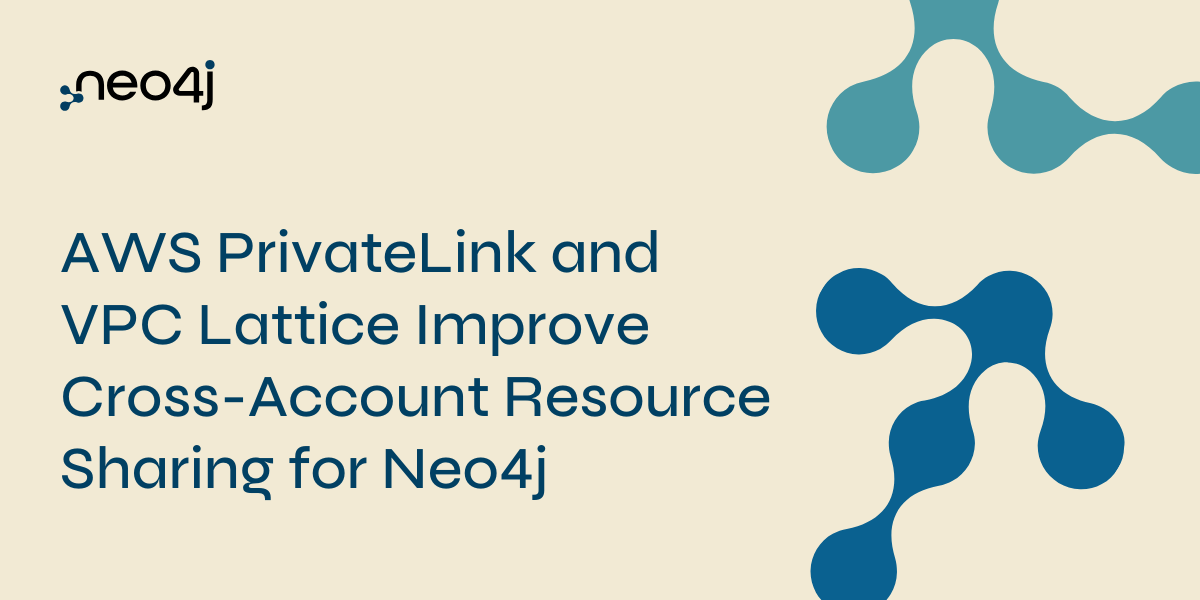Achieving Liftoff: Reflections on Six Amazing Months in Graph Databases

CMO, Neo4j
6 min read


Technically, it was 25 years ago, which is a long time in tech, but I remember it like it was yesterday.
I was in my first Product Marketing job at a NoSQL database company called Arbor Software (that later merged into Hyperion Solutions, which ended up in Oracle’s acquisition “tractor beam” in the early 2000s). It didn’t speak SQL, but we didn’t call it “NoSQL.” We called it OLAP (On Line Analytical Processing), or “multidimensional databases,” if you wanted to speak more architecturally.
Our big challenge was convincing the world that relational databases were wonderful, but that relational databases aren’t the best solution for every data problem.
Sound familiar? 😉
One day I was walking into work during the winter. It was still dark and only a handful of people were in the office. I greeted one of my coworkers, “Happy Monday, Mike!” He looked at me with an expressionless face and said, “Check your email.”
Something was up.
I sat down, opened up my email, and learned that Oracle, which was emerging as the leader in relational databases, had acquired an OLAP database engine called Express from a company called IRI. Suddenly the emerging global leader in data management had a data engine that could do a lot of what our 400-person startup’s engine could do. It didn’t help that Express was our number one competitor at the time.
“Polarizing” was the right way to describe employees’ reactions. I was too inexperienced to know how to feel. About half of my coworkers were depressed and defeated – “Well, it was fun while it lasted, but now Oracle has OLAP.” Others were elated – “Now I can tell my prospects that if they don’t believe OLAP is special they should ask Larry Ellison to explain!”
The latter group turned out to be right. Oracle validated the market, as well as making it more competitive, forcing every vendor to try harder to win more customers and serve them better. Essbase and other OLAP technologies are still around today. Arbor Software was the category leader at the time, and got far more than its fair share of the increased market activity.
Say What You Want, but Amazon Saw This Coming
Amazon is obviously a huge player in cloud services and data management. And there was an earthquake in the graph market when Amazon announced plans to deliver a graph cloud service for the AWS platform called Neptune.People, including me, have opinions about Amazon’s behavior relative to the open source community and commercial open source vendors. But love it or hate it, you have to give them credit for this. They saw graphs coming. Not like Neo4j did back when we first put “graph” and “database” together. But Amazon made a smart bet the graph market would thrive, and the first half of 2021 proved them right.
What a (Half) Year It’s Been!
Forrester, a leading IT research and advisory firm, crystallized a lot of attention on graphs and helped solidify graphs as an independent database category in late 2020 when they published the first-ever Forrester Wave for Graph Data Platforms. Forrester wasn’t alone.Other firms, including heavyweight Gartner, started writing about graphs as foundational to modern data and analytics. Research firms have continued to produce research for an increasingly-hungry client base that sees graphs as transformative, as essential to their AI/ML efforts, and capable of delivering not just breakthrough technical results but business outcomes as well. Gartner’s Market Guide for Graph Database Management Solutions is an essential window into the multitude of use cases and solutions.
Check that out guide here.
So what’s been going on in graphs in 2021 (if you haven’t been paying close attention)?
Cloud, cloud, and more cloud.
Data has been moving to the cloud for years now, recently accelerated by the pandemic. That’s great because it makes it easy for graph newbies to start their journey in the cloud without ever having to learn how to configure, secure, scale, or upgrade a graph.Neo4j introduced Neo4j AuraDB Enterprise in February, and debuted a new AuraDB Free tier at our NODES conference last month.
Data Science thriving at the intersection of graphs and machine learning.
Academia, business, and the vendor community have all woken up to the opportunity to enrich AI and ML pipelines with the rich data context that Neo4j can provide.Connections are inherent in data, and data scientists have figured out that they no longer need to leave all of that rich context behind just because their other data platforms can’t handle it well. Leave the context in, put it in Neo4j, and listen to it sing. It’s beautiful to hear, especially when it helps fight global pandemics, deliver incredible business value, or provide a better foundation for transparent, responsible AI.
Standards on the march.
Speaking of earthquakes in data management, ANSI’s blessing of the Graph Query Language (GQL) back in 2019 seriously caught the attention of people still living under the premise that graphs are “niche.” ANSI doesn’t bless the development of the first new database query language in 40+ years for a “niche.”While the first half of the year hasn’t seen a lot of news on this topic, vendor collaboration of mega-vendors and startups alike continues around both definition and delivery of a true open standard for graph querying.
Mythbusting.
The first half of the year dispelled a number of historical myths and misconceptions about graphs and the graph category.- “Graphs are a niche.” “The foundation of modern data and analytics” is anything BUT a market niche.
- “Graphs are a feature or an API.” More on this in a moment, but if you look at customer adoption and success, popularity on db-engines, and investment in the category, the excitement is all around graph databases and the top-to-bottom performance, flexibility, and agility they provide, not databases adding graphy calls to their APIs.
- “Graphs don’t scale.” Neo4j has demonstrated unbelievable performance, scale, and efficiency in real-world customer deployments, for example taking a workload once managed by 150+ Cassandra servers and move it to a 3-node Neo4j cluster with much better performance, easier maintenance, and half a million saved in cloud costs. In June, we built on the amazing scale stories of our production customers to demonstrate a trillion+ relationship graph running on AWS, sharded across more than 1,000 servers.
Investment(!)
In only the first half of the year, investors poured more than half a billion USD(!) into graph database companies, including Neo4j’s record-setting $325M financing last month.As our Co-Founder and CEO Emil Eifrem said in his keynote when he announced it, we’re going to invest in product, and product. And then product. Of course we’ll invest in geographic expansion and hiring across all functions. Emil’s point is only that if we continue to deliver the best product, everything else will be easier.
Watch This Space
While the graph market is experiencing an incredible unbundling, there are still challenges on the horizon. More on that in a future post.I’m sure the rest of the year will bring more product announcements, market adoption, funding rounds, partnerships, and more.
Having “seen this movie before” in other database categories, I truly couldn’t be more excited for what’s to come. Thanks for reading and being a part of the journey.
Learn Neo4j Today






